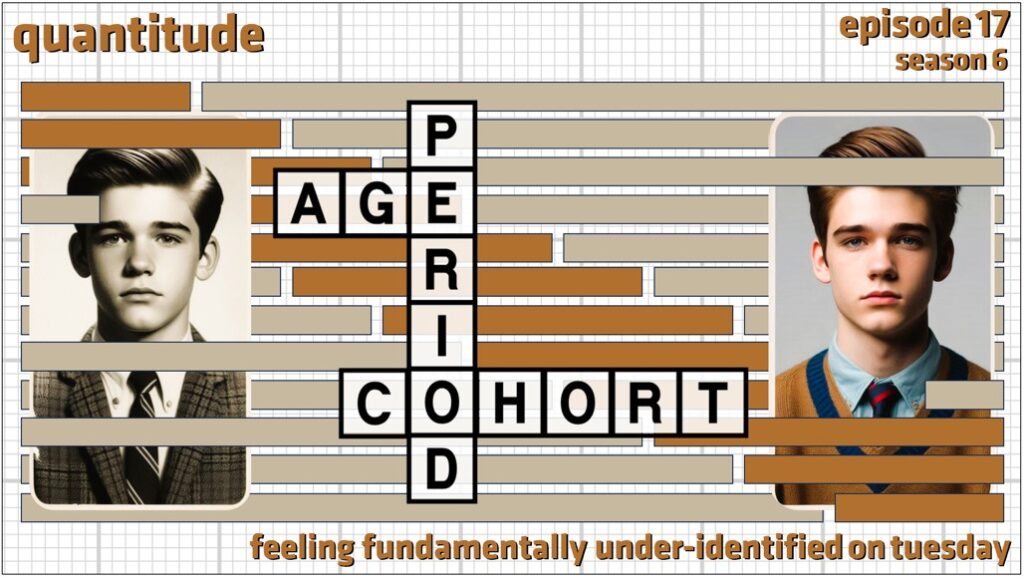In this week’s episode Greg and Patrick explore both the challenges and the opportunities of age-period-cohort analysis when trying to understand the complexities of human behavior over time. Along the way they also discuss bachelor night, Dave Brubeck, pay phones, street lights, global nuclear war, lazy thinking, I’m not a crook, biking to grandmas, HMS Pinafore, the Beatles, aggressive mice, trash snakes, and getting high at A-Basin.
Related Episodes
- S4E24: Longitudinal Measurement Invariance
- S4E14: Growth Trajectory Estimates: What’s My Line?
- S4E09: Intensive Longitudinal Data: Be Careful What You Wish For
- S2E26: MLM vs. SEM: Opportunities for Growth
Suggested Readings
Bell, A. (2020). Age period cohort analysis: a review of what we should and shouldn’t do. Annals of Human Biology, 47, 208-217.
Fienberg, S. E., & Mason, W. M. (1979). Identification and estimation of age-period-cohort models in the analysis of discrete archival data. Sociological Methodology, 10, 1-67.
Fosse, E., & Winship, C. (2019). Analyzing age-period-cohort data: A review and critique. Annual Review of Sociology, 45, 467-492.
Robinson, R. V., & Jackson, E. F. (2001). Is trust in others declining in America? An age–period–cohort analysis. Social Science Research, 30, 117-145.
Yang, Y., & Land, K. C. (2013). Age-period-cohort analysis: New models, methods, and empirical applications. Taylor & Francis.
Yang, Y., Schulhofer-Wohl, S., Fu, W. J., & Land, K. C. (2008). The intrinsic estimator for age-period-cohort analysis: what it is and how to use it. American Journal of Sociology, 113, 1697-1736.

